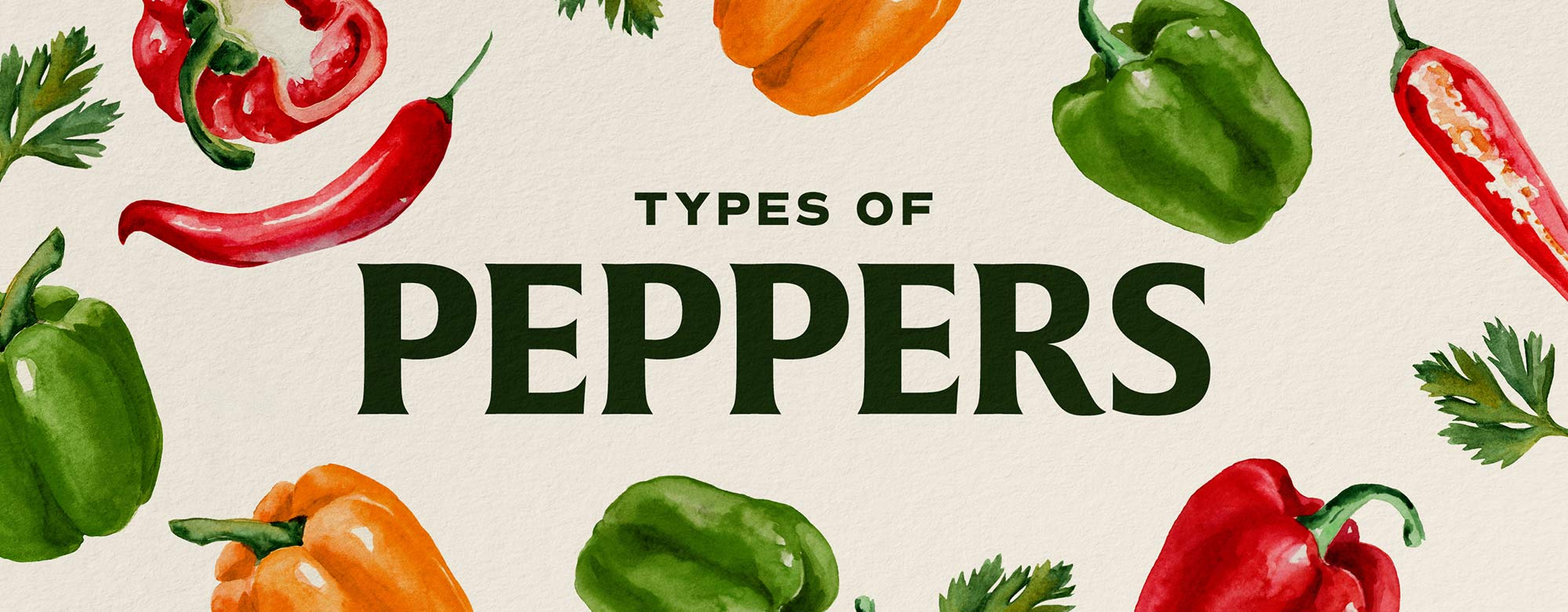
Peppers are versatile ingredients and can be found in cuisines across the globe. Though most people think of them as vegetables, they are technically fruits, coming in many different shapes, sizes, and colors. Their flavor and rank on the Scoville scale, measured in Scoville Heat Units (SHU), can vary significantly depending on which type of pepper you eat. We'll outline the different peppers and what sets them apart below so that you can identify which pepper best fits your culinary needs.
Shop All Peppers1. Bell Peppers

Bell peppers are larger peppers that are known for their distinct bell shape. These peppers are green in their unripe state but turn red, yellow, or orange as they ripen. In some instances, they can even turn white or purple. Bell peppers are not considered spicy, and they feature a subtly sweet flavor and high water content, making them perfect for adding moisture to your dishes. Whether you're sauteing them with other vegetables, stuffing them with flavorful fillings, or incorporating them into salads or stir-fries, bell peppers bring a refreshing crunch and vibrant hue to your menu.
- Bell pepper area of origin: South and Central America
- Bell pepper heat level: 0 SHU
- Also known as: Sweet bell peppers
2. Cayenne Peppers
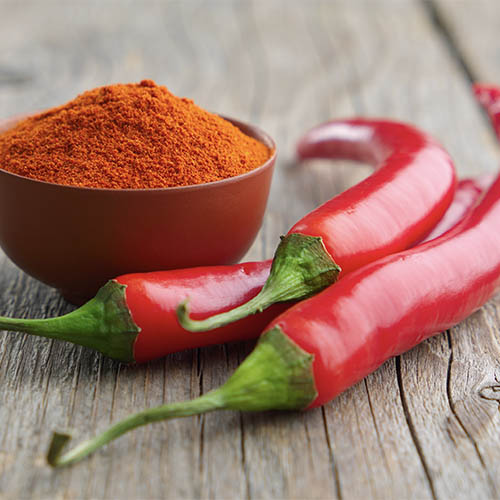
Cayenne peppers are known for their intense heat and distinct flavor. These peppers are small and slender, measuring 4-6" long. Due to their spiciness and subtly smoky flavor, cayenne peppers are popular in Southwest cuisine. It's important to note that while they are used in their traditional form, cayenne peppers can also be dried, ground into a fine powder, and used as a spice, where their vibrant red color adds visual appeal to foods and spice blends. Popular dishes and recipes that use cayenne pepper include chili, hot sauce, and salsa.
- Cayenne pepper rea of origin: South and Central America
- Cayenne pepper heat level: 30,000-50,000 SHU
- Also known as: Finger chillies, bird peppers
3. Serrano Peppers
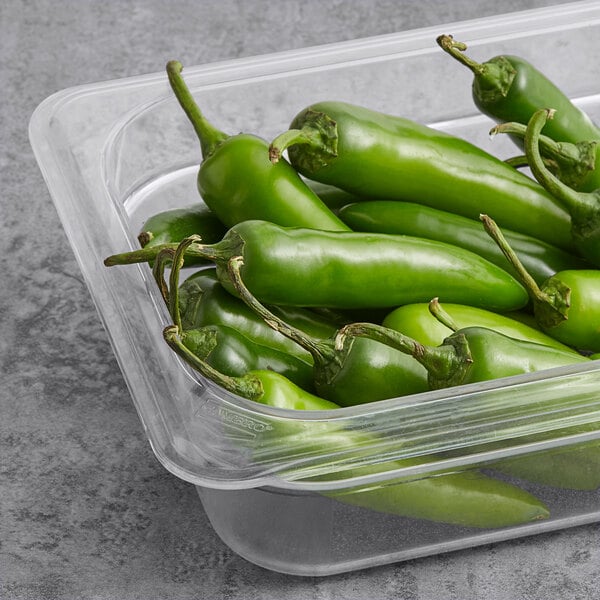
Serrano peppers are smaller and shorter than other pepper varieties and have been a staple in Mexican cuisine for centuries. They are well-loved for their fiery heat and distinct flavor profile, often featuring an earthy, grassy taste. When unripe, serrano peppers are green in color, but as they mature, they turn red or yellow. Their vibrant colors and slender shape make these peppers visually appealing in various culinary applications. Serrano peppers are often key ingredients in salsa, pico de gallo, and guacamole, and can be added to stir-fries, soups, and stews to add a spicy kick and depth of flavor.
- Serrano pepper area of origin: Puebla and Hidalgo regions of Mexico
- Serrano pepper heat level: 10,000 - 25,000 SHU
- Also known as: Red serrano peppers
4. Ghost Peppers
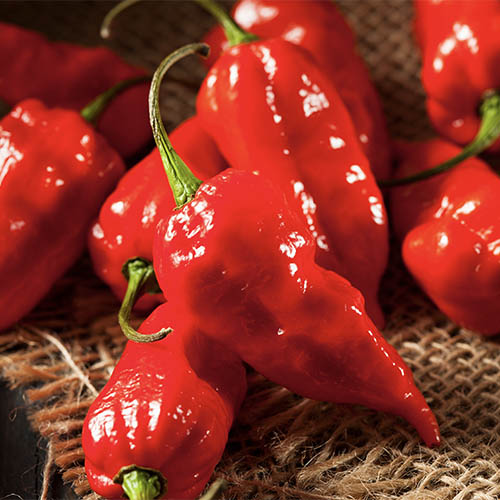
Ghost peppers are considered one of the spiciest edible peppers on the planet. These small red peppers may not be suitable for those with a low tolerance for spice, but their slightly sweet taste makes them a unique addition to curry, salsa, and chutney. The most popular way ghost peppers are used is as an ingredient in ghost pepper hot sauce, which has gained a following for its intense heat and unique flavor. It's important to note that ghost pepper hot sauce should be used sparingly, as even a small amount can be extremely spicy.
- Ghost pepper area of origin: Sri Lanka and Bangladesh
- Ghost pepper heat level: 1,000,000 SHU
- Also known as: Bhut Jolokia
5. Anaheim Pepper
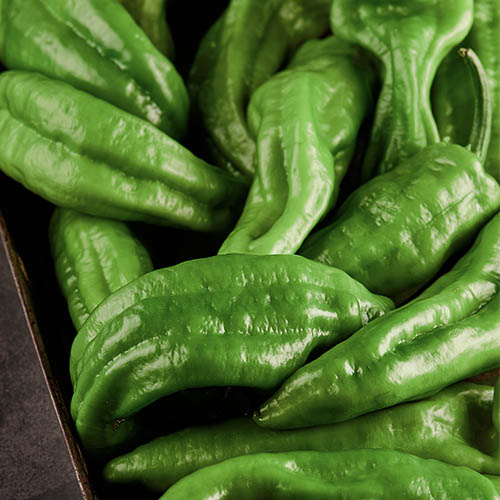
Anaheim peppers are long, skinny peppers, often measuring 8" in length. They are typically sold and cooked green but display a deep red color when allowed to ripen. These peppers are mildly spicy with a tangy, smoky taste, allowing them to add a subtle kick and touch of flavor to dishes without overpowering the other ingredients. Because of their versatility, these peppers lend themselves to many recipes, including soups, stews, and salsas. Some chefs even stuff them with cheese or other fillings, making a delicious appetizer.
- Anaheim pepper area of origin: New Mexico
- Anaheim pepper heat level: 500-2,500 SHU
- Also known as: New Mexico chile, California green chile
6. Poblano Peppers
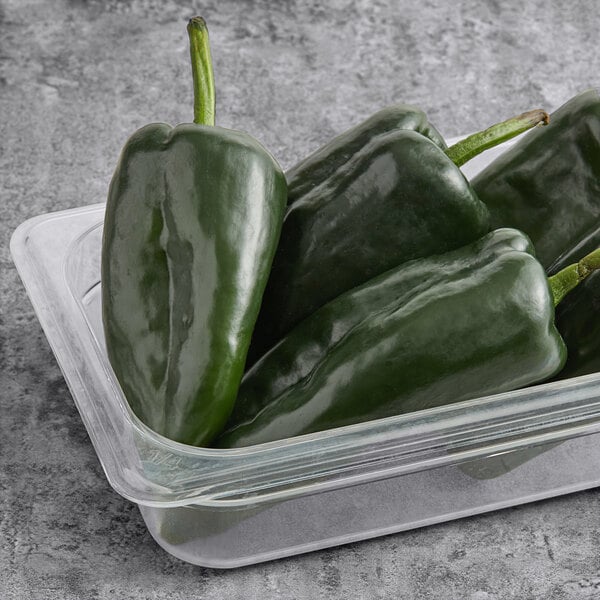
Poblano peppers are large, green, heart-shaped peppers. In their fresh form, Poblano peppers have a mild level of spiciness, but as they mature, their heat level increases. Poblano peppers can also be dried, roasted, and served in a different form as Ancho peppers, which are dark brown and feature a rich, smoky taste. Poblano peppers are used in salsa and hot sauce but can also be stuffed and served on their own. Their counterparts, Ancho peppers, are frequently used to create marinades and meat rubs.
- Poblano pepper area of origin: Puebla, MX
- Poblano pepper heat level: 1,000-2,000 SHU
- Also known as: Ancho peppers
7. Habanero Peppers
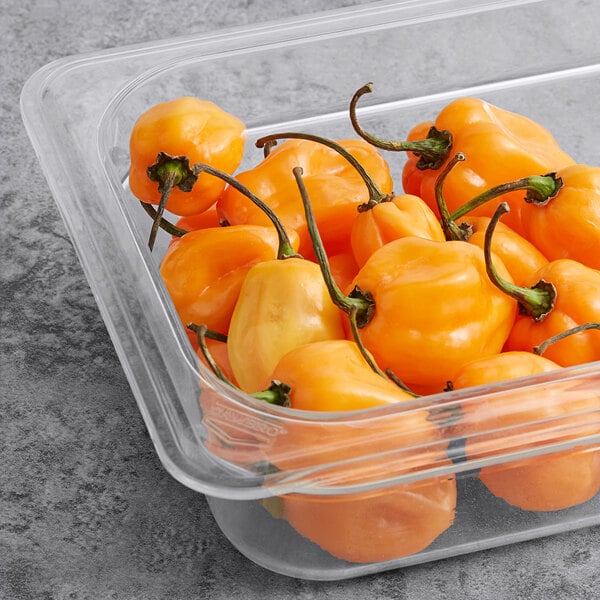
Habanero peppers have a small bulbous shape and are typically yellow or orange. They are well-known for their intense spiciness, earning them a reputation as one of the hottest peppers on the market. Habaneros have a distinctly fruity flavor and are an ingredient in many Mexican recipes. Their combination of flavor and heat makes them a popular choice for hot sauce, salsa, and marinades, as well as in recipes that call for extra heat. Some bartenders even use them as an ingredient and garnish for cocktails.
- Habanero pepper area of origin: South and Central America
- Habanero pepper heat level: 100,000-350,000 SHU
- Also known as: Habanero chiles
8. Scotch Bonnet Peppers
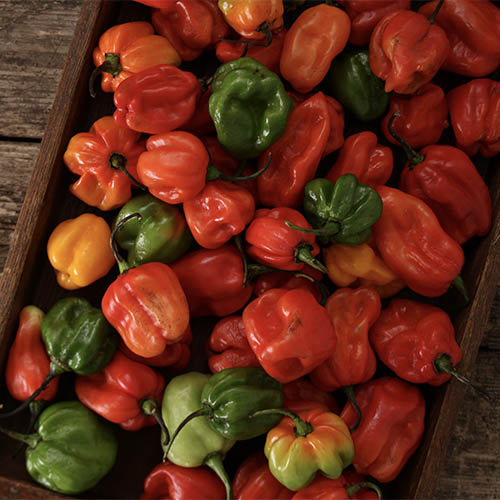
Scotch bonnet peppers are similar in appearance to habaneros but typically come in orange or red shades. They have a sweeter taste than their counterparts while remaining spicy. With Caribbean roots, these peppers are commonly used in jerk chicken and pork recipes, as well as in marinades, rubs, and seasoning blends. The distinct taste of Scotch bonnet peppers enhances the authenticity of traditional Caribbean dishes, providing a unique and memorable culinary experience.
- Scotch bonnet pepper area of origin: South and Central America, Caribbean Islands
- Scotch bonnet pepper heat level: 100,000-350,000 SHU
- Also known as: Caribbean pepper, Bonney pepper
9. Banana Peppers
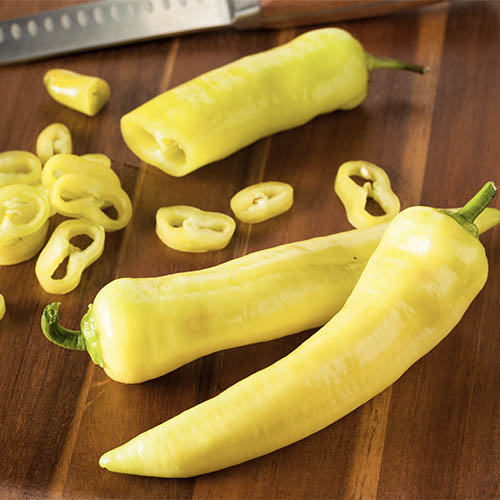
Banana peppers are identified by their distinct shape and color, resembling a banana. They are not considered spicy and feature a sweet, tangy taste. These versatile peppers can be used in a wide range of dishes, adding unique flavor and a touch of visual contrast without overpowering other ingredients. They are most frequently used as a topping for sandwiches, pizzas, and salads but can also be included on charcuterie boards. Some people also prefer pickled banana peppers.
- Banana pepper area of origin: Hungary
- Banana pepper heat level: 500 SHU
- Also known as: Yellow wax pepper
10. Tabasco Peppers
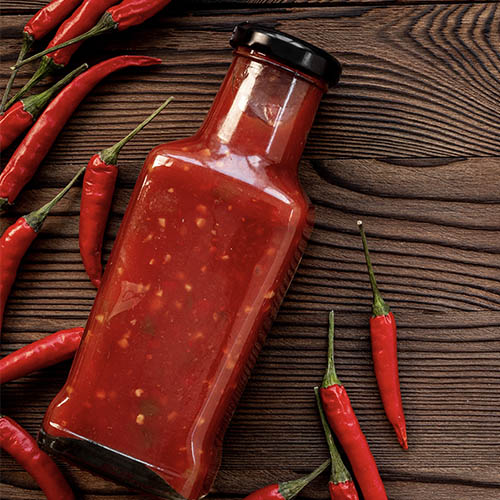
Tabasco peppers are small, bright red peppers known for their intense spiciness and distinct smoky taste. Though they originate in Mexico and are common in Mexican cuisine, these peppers are across the globe, as their distinct flavor profile adds complexity to a wide range of recipes. Tabasco peppers are used in salsas and marinades but are most popularly known as the main ingredient in TABASCO® sauce. It's important to note that while Tabasco peppers are considered very spicy, the hot sauce they share their name with is less spicy.
- Tabasco pepper area of origin: Mexico
- Tabasco pepper heat level: 30,000-50,000 SHU
- Also known as: Bird peppers, hot peppers
11. Jalapeno Peppers
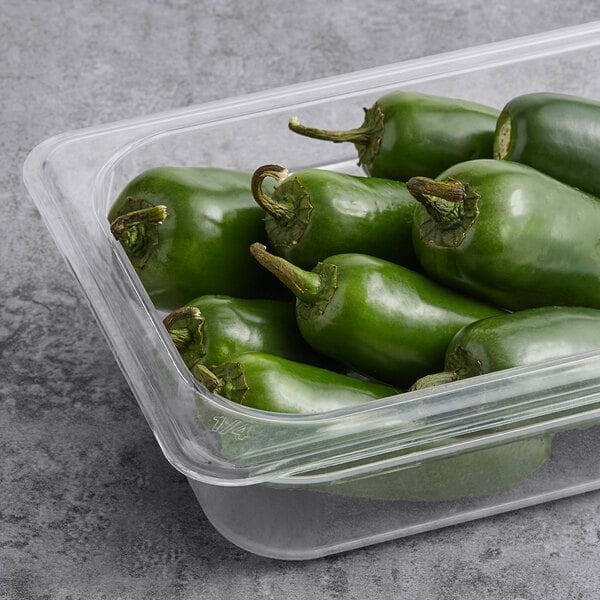
Jalapenos are one of the most popular peppers and are widely used in commercial kitchens. These small peppers are typically plucked from the vine early in the ripening process to keep them green, but they will turn a vibrant shade of red when ripe. Jalapenos are known as moderately spicy peppers and feature a distinct earthy flavor, though their heat level can vary depending on growing conditions. Jalapenos are incredibly versatile; they can be used as an ingredient in hot sauce or salsa, served pickled and as a condiment, stuffed and served as an appetizer, and even grilled. When jalapenos are smoked and dried, they are known as chipotle peppers, known for their bitter and smoky taste.
- Jalapeno pepper area of origin: Jalapa, MX
- Jalapeno pepper heat level: 2,500-10,000 SHU
- Also known as: Chipotles
12. Cherry Peppers
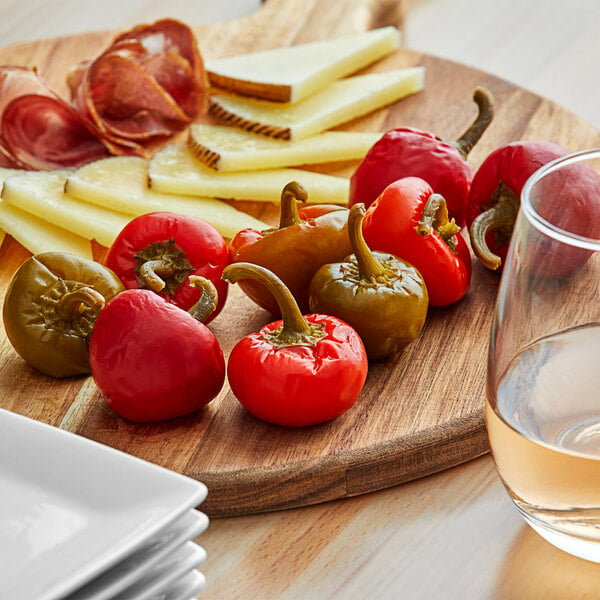
Cherry peppers are small, spherical, and distinguished by their bright red color. These sweet peppers have a high water content and are mildly spicy, though their spiciness can vary depending on various factors and growing conditions. It's important to note that although they are commonly confused for one another, cherry peppers are not pimentos. Cherry peppers can be used in many different ways in the kitchen. They can be served on their own, used as a condiment, and stuffed and served as poppers.
- Cherry pepper area of origin: South and Central America
- Cherry pepper heat level: 2,500-5,000 SHU
- Also known as: Sweet cherry peppers, cherry bomb peppers
13. Piquillo Peppers
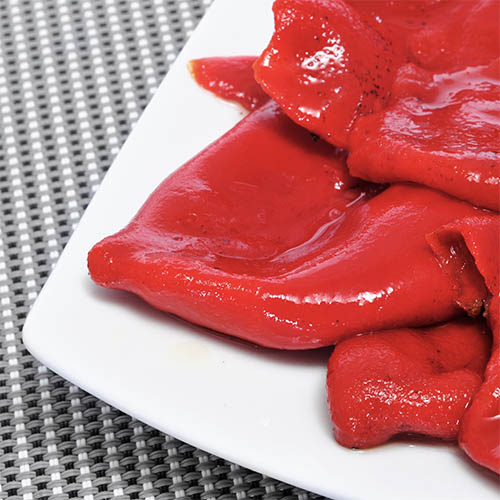
Piquillo peppers are medium-sized peppers that are easily recognizable by their distinct shape, which curves at the end. They are often served roasted and skinned, ensuring a smooth and tender texture and allowing their flavors to develop. In terms of taste, piquillo peppers have a mildly spicy kick with a hint of sweet flavor. This combination makes them a versatile ingredient that can add depth and complexity to a wide range of dishes, including on sandwiches and as an ingredient in certain sauces.
- Piquillo pepper area of origin: Spain
- Piquillo pepper heat level: 500-1,000 SHU
- Also known as: Little beak peppers
14. Rocoto Peppers
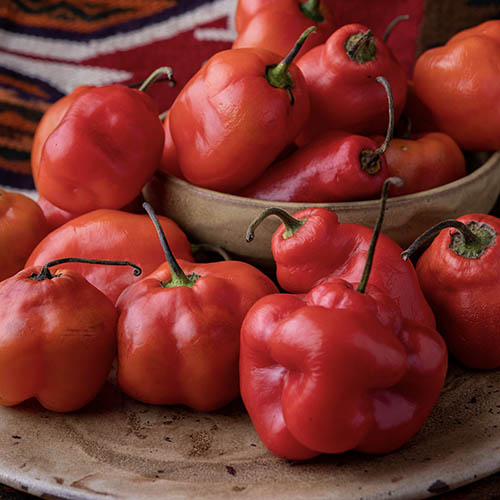
Rocoto peppers are a unique variety of peppers that are popular in Latin American cuisine. These peppers resemble miniature bell peppers and come in shades of orange, red, and yellow, adding a vibrant touch to any dish. They are very spicy with a grassy and slightly fruity taste. Two distinguishing features of these peppers are their leaves and seeds. Their leaves are furry, contributing to the nickname "hairy pepper," while their seeds are black, adding a striking visual element.
- Rocoto pepper area of origin: Chile and Colombia
- Rocoto pepper heat level: 30,000-100,000 SHU
- Also known as: Hairy peppers
15. Chilaca Peppers
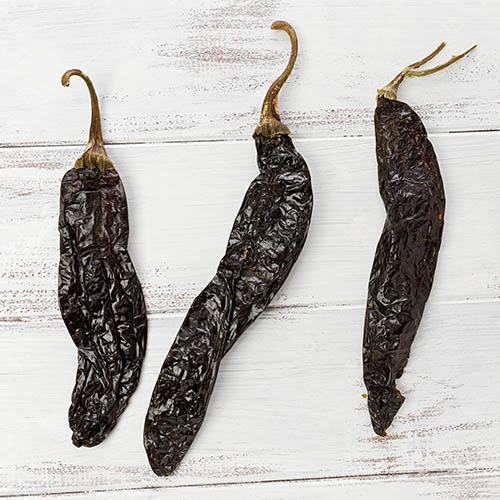
Chilaca peppers are a unique variety of peppers with a distinct black and wrinkly appearance. These elongated peppers are known for their slight spiciness and rich, prune-like taste, adding a depth of flavor to various dishes. One popular way to use chilaca peppers is by toasting or roasting them. This process enhances their smoky flavor and brings out their natural sweetness. Once toasted, they can be finely chopped and added to sauces, salsas, or marinades, imparting a delightful complexity to the dish.
- Chilaca pepper area of origin: Chile, Peru, Argentina
- Chilaca pepper heat level: 1,000-2,500 SHU
- Also known as: Pasilla, chile negro
16. Piri Piri Peppers
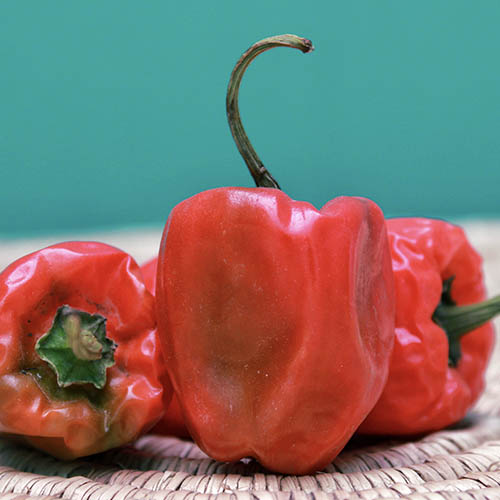
Piri Piri peppers are native to Portugal but have grown in Africa for centuries. These small red peppers typically only measure 1" in size, but are very spicy and offer a light, herbal taste. This combination of heat and taste makes them an excellent addition to marinades, allowing chefs to prepare spicy grilled meats, poultry, and seafood. Piri Piri peppers are also the key ingredient in piri piri sauce, which can vary depending on which region of the world you are in.
- Piri Piri pepper area of origin: Portugal
- Piri Piri pepper heat level: 50,000-175,000 SHU
- Also known as: Peri Peri peppers
17. Mirasol Chili Peppers
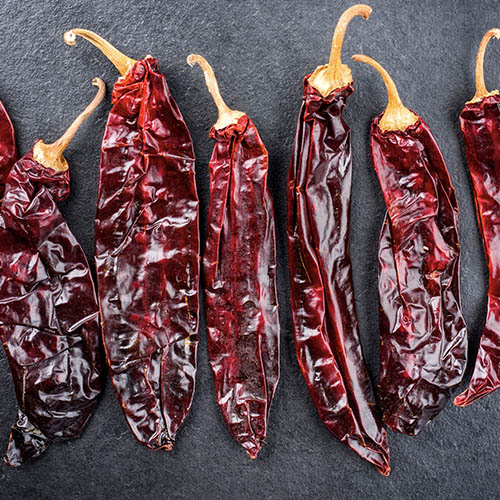
Mirasol Chilis are bright red peppers that got their name from their growth pattern, as "mirasol" means "looking at the sun" in Spanish. These vibrant peppers have a unique shape, growing towards the sun with their tips pointing upwards. They provide a pleasant kick without overwhelming the palate and a hint of fruity taste, making them suitable for those who prefer milder heat levels. Drying Mirasol chilis turns them into Guajillo peppers, intensifying their flavor to be fruity, tangy, and mildly acidic.
- Mirasol chili pepper area of origin: Mexico
- Mirasol chili pepper heat level: 2,500-5,000 SHU
- Also known as: Guajillo
Back to Top
When it comes to choosing peppers, there are a wide range of factors to consider. Flavor, color, and heat level can vary significantly between peppers, and it's important to educate yourself on the different types. By using the information above, you can make informed purchasing decisions and choose the right peppers for your culinary needs.





